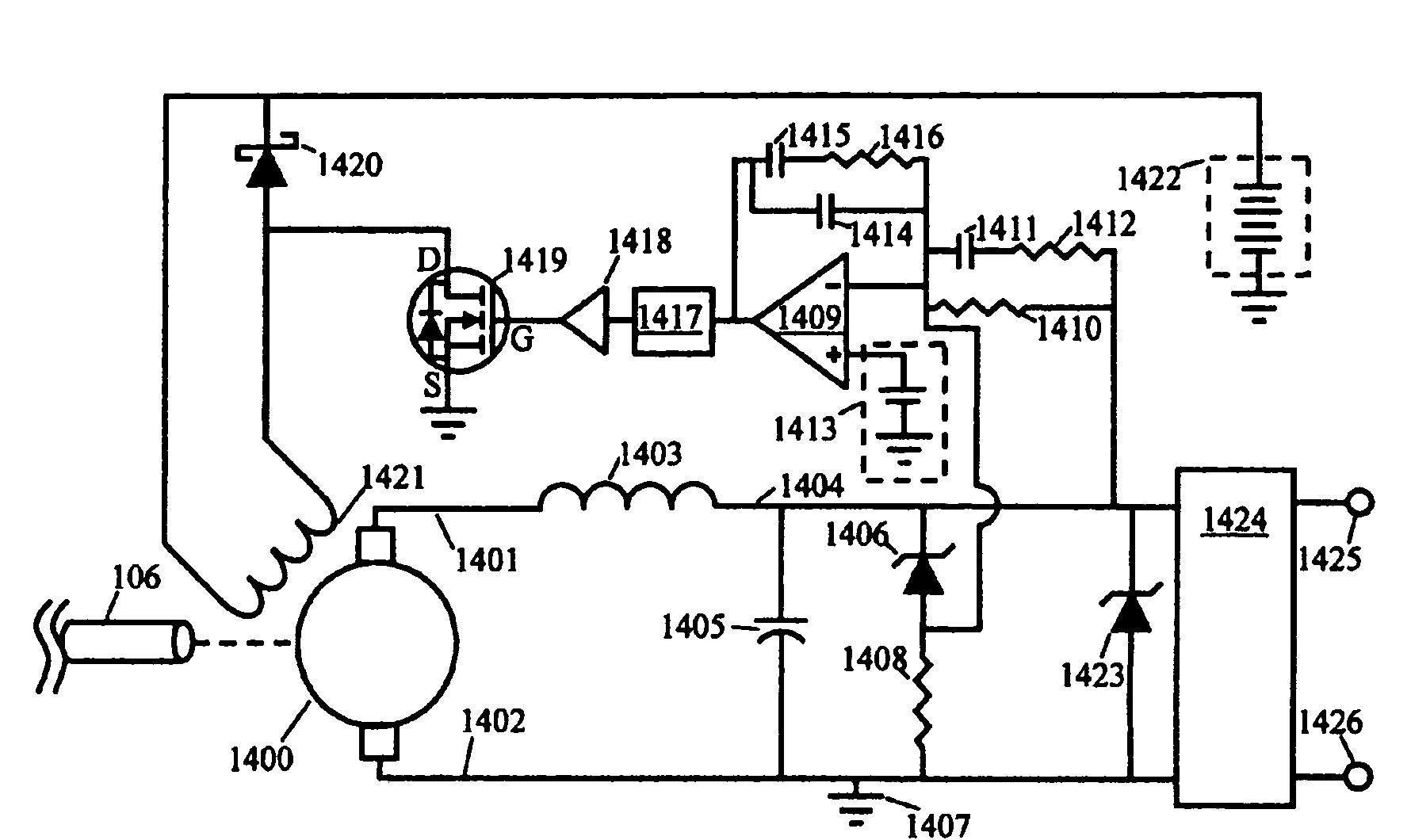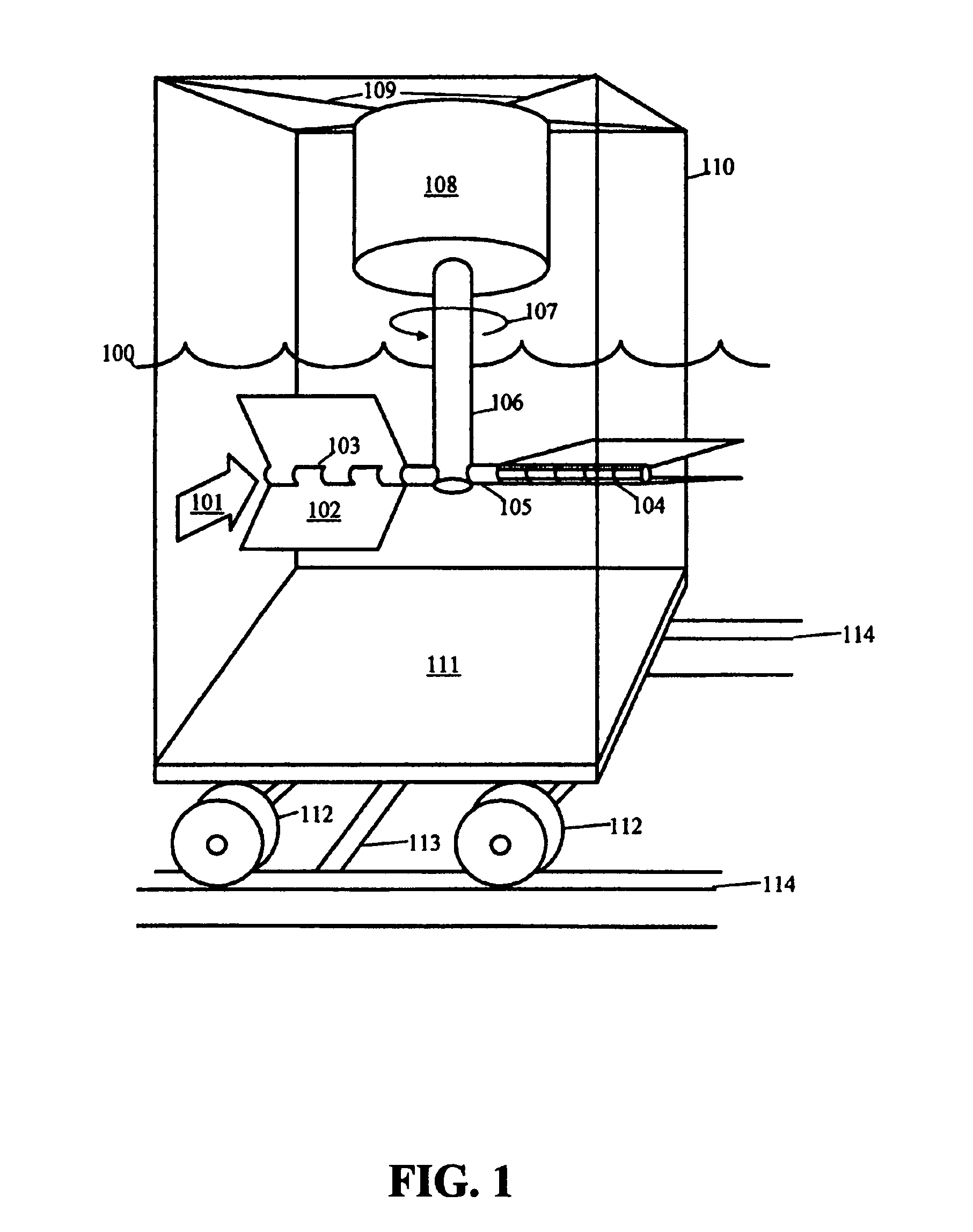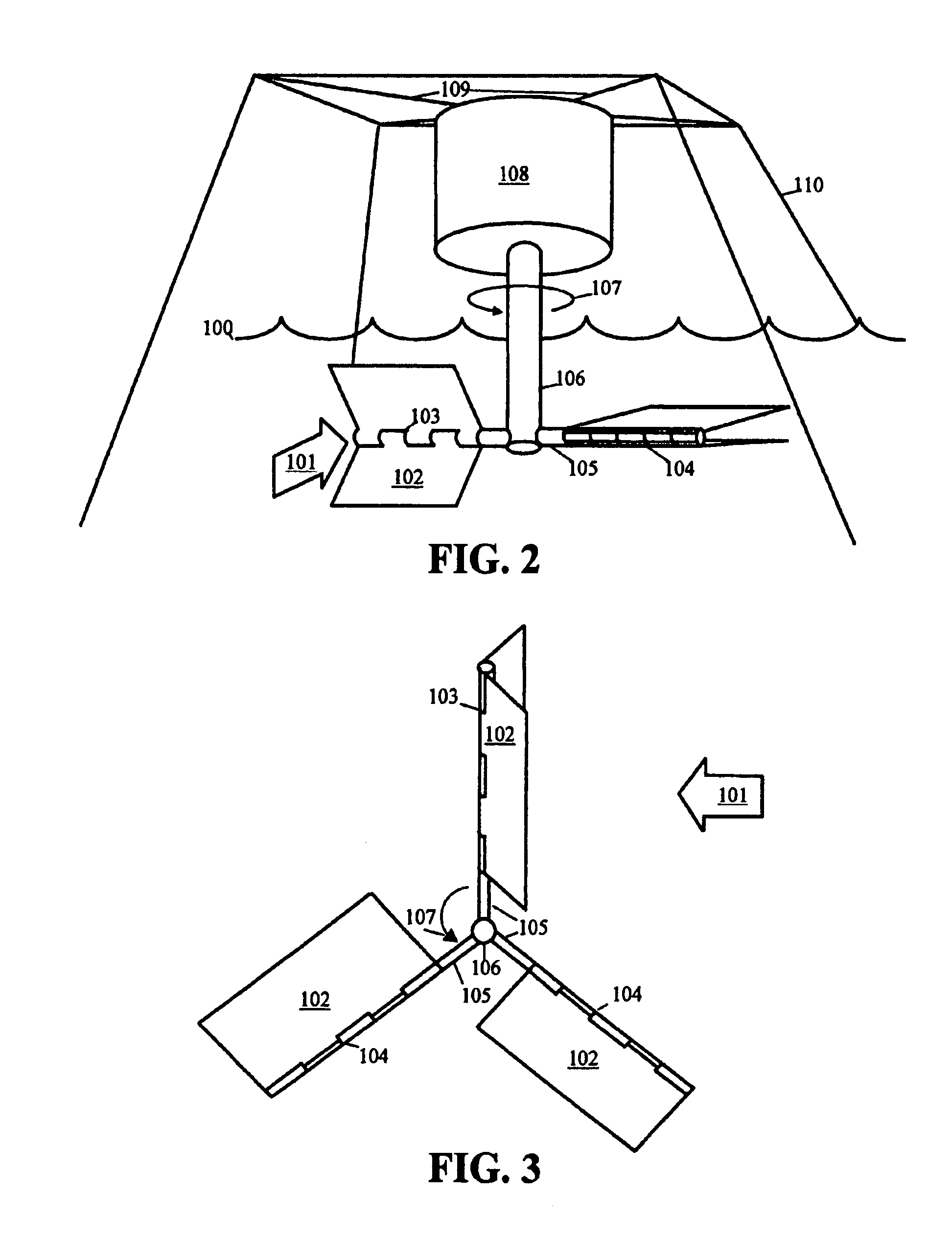Transverse hydroelectric generator
a generator and transverse technology, applied in the direction of electric generator control, machines/engines, mechanical equipment, etc., can solve the problems of life-threatening flooding downstream from the site of the hydraulic power plant infrastructure, displace all human inhabitants, etc., and achieve positive net energy and reduce environmental impact
- Summary
- Abstract
- Description
- Claims
- Application Information
AI Technical Summary
Benefits of technology
Problems solved by technology
Method used
Image
Examples
Embodiment Construction
[0028]The present invention is directed to a transverse hydroelectric generator comprising hinged runner blades for adaptively extracting energy from a free flowing motive fluid that continuously changes direction and magnitude of flow. The following description contains specific information pertaining to various embodiments and implementations of the present invention. One skilled in the art will recognize that the present invention may be implemented in a manner different from that specifically depicted in the present specification. Furthermore, some of the specific details of the invention are not described in order to maintain brevity and to not obscure the invention. The specific details not described in the present specification are within the knowledge of a person of ordinary skills in the art. Obviously, some features of the present invention may be omitted or only partially implemented and remain well within the scope and spirit of the present invention.
[0029]The following ...
PUM
 Login to View More
Login to View More Abstract
Description
Claims
Application Information
 Login to View More
Login to View More - R&D
- Intellectual Property
- Life Sciences
- Materials
- Tech Scout
- Unparalleled Data Quality
- Higher Quality Content
- 60% Fewer Hallucinations
Browse by: Latest US Patents, China's latest patents, Technical Efficacy Thesaurus, Application Domain, Technology Topic, Popular Technical Reports.
© 2025 PatSnap. All rights reserved.Legal|Privacy policy|Modern Slavery Act Transparency Statement|Sitemap|About US| Contact US: help@patsnap.com



